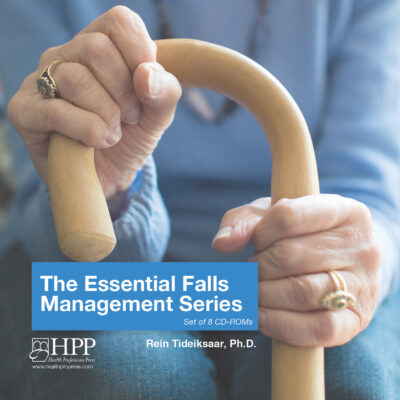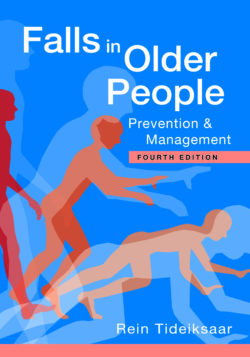Product Description
Within nursing homes and assisting living facilities, falls constitute the single largest category of adverse events, including both physical and psychological complications. Develop a concrete plan to reduce falls in your facility with the Essential Falls Management Series. Covering a wide range of falls-related topics, and filled with assessment forms, checklists, guidelines, and PowerPoint presentations for targeted staff training, this series provides everything you need to implement a comprehensive and successful falls prevention and management program.
Topics covered include: managing falls in assisted living and in adult day services; guides to bed safety, exit alarms, and hip protectors; post-fall assessment program and resources; and addressing the unique risks and needs for people with intellectual and developmental disabilities. Each topic contains a PowerPoint presentation for targeted staff training.
The Essential Falls Management Series is made up of 8 CD-ROMs. All CD-ROM contents are also available for download from www.healthpropress.com/falls-series-downloads. You will receive a URL and code to access the content when you receive your order.
Tools to help you create a fall prevention program include:
- Basic falls risk screening and prevention program
- Falls prevention guidelines
- Falls prevention program policy
- Falls prevention protocols
- Falls risk intervention and screening tool
- Environmental safety checklist
- Environmental precautions handout
- An approach to assessing medications and fall risk
- Performance-Oriented Mobility Screening tool
- Post-fall assessment and care plan interventions
- And more!
PowerPoint presentations for targeted staff training include:
- Preventing Falls in Acute Hospitals
- Preventing Falls in Nursing Facilities
- Reducing Risk of Falling in Assisted Living Facilities
- Reducing the Risk of Falling in Adult Day Services
- Bed Safety: Avoiding Falls and Injuries
- Managing Hip Fracture Risk with Hip Protectors
- Exit Alarms: A Fall Prevention Strategy
- Reducing the Risk of Falling
- Post-Fall Assessment In-Service Lecture
CD-ROMs:
- Assessment and Training Tools
- Managing Falls in Assisted Living
- Managing Falls in Adult Day Services
- Guide to Bed Safety
- Guide to Exit Alarms
- Guide to Hip Protectors
- After the Fall
- Falls and People with Intellectual and Developmental Disabilities



Reviews
There are no reviews yet.